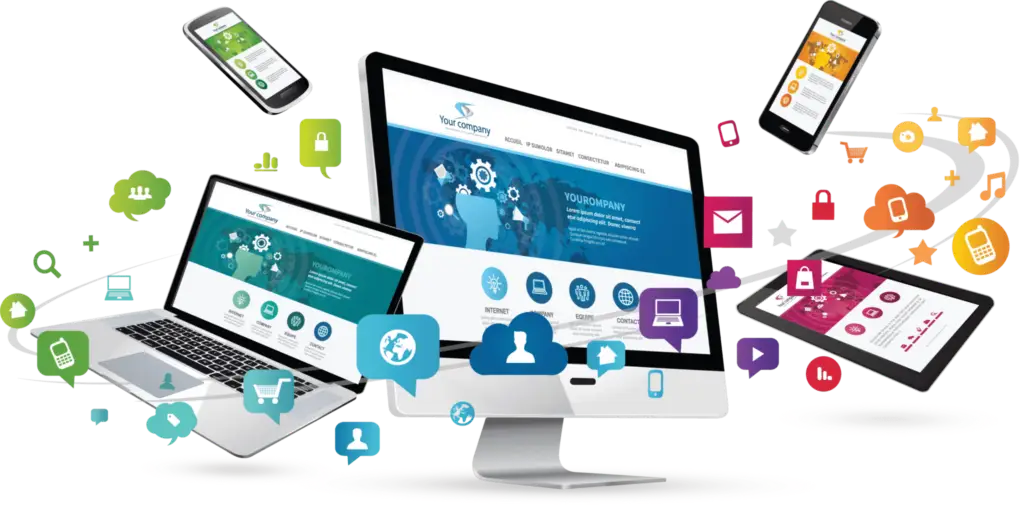The National disability Insurance Scheme (NDIS) now supports over 500,000 Australians with disability across the country and as of march 2023, over 19000 registered NDIS providers are actively providing support. If you are a registered NDIS provider and want to have your services marketed then you are one among many trying to do the same. As we move further into 2025, the digital needs of NDIS providers and participants are becoming increasingly sophisticated, demanding websites that are not only visually appealing but also highly functional, accessible, and optimized for conversions.
At UniWeb Australia, we’ve seen firsthand how a well-designed, future-proofed website can transform an NDIS provider’s online presence and client acquisition. This comprehensive guide explores the latest web design trends that will help your NDIS business thrive in the digital space for years to come.
Why Website Design Matters for NDIS Providers
Before diving into specific trends, it’s important to understand why your website design is particularly crucial in the NDIS sector:
- Trust Building: For many participants and their families, your website is their first impression of your services. A professional, accessible design immediately builds credibility.
- Accessibility Requirements: NDIS providers have a unique responsibility to ensure their digital presence is accessible to people with disabilities—the very people they serve.
- Competitive Advantage: With the NDIS market growing more competitive each year, a standout website can be the difference between a potential client choosing your services over a competitor’s.
- Regulatory Compliance: As the NDIS Commission continues to evolve its guidelines, having a flexible website framework allows you to adapt to new requirements quickly.
Now, let’s explore the key trends shaping the future of web design for NDIS businesses.
1. Accessibility-First Design
The Evolution of Digital Accessibility
Accessibility is no longer an afterthought—it’s the foundation of modern web design, especially for NDIS providers. The Web Content Accessibility Guidelines (WCAG) 2.2 standards are now considered the minimum benchmark, with many forward-thinking NDIS providers already preparing for WCAG 3.0.
Implementing Accessibility-First Design
- Adaptive Interfaces: Websites that automatically adjust based on user preferences and needs, such as high-contrast modes, simplified layouts, or text-to-speech integration.
- Semantic HTML Structure: Properly structured content that makes navigation intuitive for screen readers and assistive technologies.
- Keyboard Navigation: Ensuring all website functions can be accessed without a mouse.
- Alt Text and Captions: Comprehensive descriptions for all visual elements and captioned videos.
Learn more about our accessibility-focused web design services and how they can help your NDIS business meet and exceed compliance requirements.
2. Mobile-First, Responsive Design
Beyond Basic Responsiveness
While responsive design has been important for years, we’re now seeing NDIS providers adopt truly mobile-first strategies that prioritize the smartphone experience over desktop.
Key Mobile-First Elements
- Progressive Loading: Content that loads in order of importance, ensuring users on mobile networks can access critical information quickly.
- Thumb-Friendly Navigation: Interface elements positioned within easy reach of thumb movements on mobile screens.
- Simplified Forms: Streamlined inquiry and intake forms specifically designed for mobile completion.
- Click-to-Call Integration: One-touch calling functionality that connects potential clients directly to your intake team.
According to a recent study by the Web Accessibility Initiative, over 70% of NDIS participants now research service providers primarily on mobile devices, making this approach essential for future growth.
3. Voice Search Optimization
The Voice Search Revolution
With the rise of virtual assistants and voice-activated devices, optimizing your NDIS website for voice search is becoming increasingly important.
Voice Search Strategies
- Conversational Keywords: Incorporating natural language phrases that match how people speak when searching by voice.
- FAQ Structured Data: Implementing schema markup that helps voice assistants identify and read your answers to common questions about NDIS services.
- Local Voice Search Optimization: Ensuring your business appears in voice search results when potential clients ask for NDIS providers “near me.”
Visit our SEO for NDIS Providers guide to learn how voice search optimization fits into your broader digital marketing strategy.
4. AI-Powered Personalization
Personalized User Experiences
Artificial intelligence is revolutionizing how NDIS websites interact with visitors, creating personalized experiences that increase engagement and conversions.
AI Applications for NDIS Websites
- Dynamic Content Generation: Content that adjusts based on whether the visitor is a participant, family member, support coordinator, or referrer.
- Behavioral Analysis: AI tools that analyze user behavior to continually optimize user journeys through your site.
- Predictive Service Recommendations: Suggesting relevant NDIS services based on pages viewed and user interaction patterns.
- Intelligent Chatbots: Advanced conversation agents that can answer specific questions about NDIS funding, service availability, and booking processes.
Our AI-enhanced web solutions help NDIS providers deliver personalized experiences while respecting privacy and ethical considerations.
5. Micro-Interactions and Animation
Enhancing User Engagement
Subtle interactive elements can significantly improve how users engage with your NDIS website, making the experience more intuitive and rewarding.
Effective Micro-Interactions
- Feedback Animations: Visual confirmation when forms are submitted or appointments are booked.
- Interactive Service Explorers: Dynamic elements that reveal service details without requiring page navigation.
- Progress Indicators: Visual cues that show users where they are in multi-step processes like service registration.
- Subtle Motion Effects: Gentle animations that guide attention to important elements without being distracting.
These elements must be implemented thoughtfully, ensuring they enhance rather than hinder accessibility. Learn more about balancing engagement and accessibility in our NDIS website best practices guide.
6. Enhanced Security and Privacy Features
Building Trust Through Protection
With increasing concerns about data privacy and security, especially regarding sensitive NDIS participant information, robust security features are becoming a differentiating factor in website design.
Critical Security Elements
- Visible Security Indicators: Clear visual cues that demonstrate your commitment to data protection.
- Transparent Privacy Controls: Easy-to-understand privacy settings that give users control over their information.
- Compliance Messaging: Clear communication about how you protect data in accordance with NDIS and privacy regulations.
- Secure Forms and Payment Processing: State-of-the-art encryption for all data collection points.
Our secure website development approach ensures your NDIS business meets all regulatory requirements while building client trust.
7. Performance Optimization
Speed as a Competitive Advantage
Website loading speed is now a critical factor in both user experience and search engine rankings, with each second of delay potentially costing you clients.
Performance Enhancement Techniques
- Next-Generation Image Formats: Using WebP and AVIF formats to reduce image size without sacrificing quality.
- Progressive Web App Features: Implementing PWA capabilities for faster loading and offline access.
- Content Delivery Networks: Utilizing CDNs to serve content quickly regardless of the user’s location.
- Server-Side Rendering: Delivering pre-rendered pages for faster initial loads.
According to Google’s Web Vitals research, websites that meet core performance metrics see 24% lower abandonment rates—critical for NDIS providers looking to convert visitors into clients.
8. Data-Driven Design Decisions
Measuring What Matters
The future of NDIS website design lies in making decisions based on real user data rather than assumptions or trends alone.
Data-Driven Design Process
- Heat Mapping Analysis: Visualizing exactly where users focus their attention on your pages.
- Conversion Path Analysis: Tracking the journey from initial visit to service inquiry.
- A/B Testing: Systematically testing different design elements to identify what resonates with your specific audience.
- User Testing with NDIS Participants: Involving actual participants in your design process for authentic feedback.
Our analytics and optimization services help NDIS providers continuously improve their websites based on real-world performance data.
Conclusion: Taking the Next Step
Future-proofing your NDIS business website isn’t a one-time project—it’s an ongoing commitment to excellence in digital experience. By embracing these trends while staying focused on the unique needs of NDIS participants and their support networks, you can create a website that not only showcases your services effectively today but remains relevant and competitive for years to come.
At UniWeb Australia, we specialize in creating forward-thinking websites for NDIS providers that combine cutting-edge design with deep understanding of the sector’s unique requirements. Our team stays at the forefront of web design trends while maintaining a keen focus on accessibility, compliance, and conversion optimization.
Ready to future-proof your NDIS business website? Contact our team for a complimentary website audit and discover how these trends can be applied to your specific business needs.



